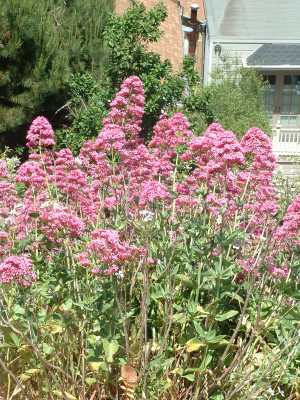Valerianaceae
Valerianaceae, commonly known as the valerian family, is a family of flowering plants that includes a number of well-known and widely used herbs. The family is named after the genus Valeriana, which includes the popular herbal medicine valerian, used for its sedative properties. This family is significant both ecologically and economically, with members found in diverse habitats around the world.
Description[edit | edit source]
Members of the Valerianaceae family are mostly herbaceous plants, with a few shrubs and small trees. They are characterized by their opposite leaves and the presence of inflorescences, which are often scented. The flowers are usually small, with five petals that are sometimes fused at the base, and they can be white, pink, or lavender in color. The fruit is typically an achene, which aids in the dispersal of seeds by wind.
Distribution[edit | edit source]
The Valerianaceae family has a wide distribution, with species found in temperate regions of North America, Europe, and Asia, as well as in parts of South America and Africa. They tend to thrive in a variety of habitats, including forests, grasslands, and mountainous areas.
Economic Importance[edit | edit source]
Several species within the Valerianaceae family are of economic importance due to their medicinal properties. The most notable is Valeriana officinalis, commonly known as valerian, which has been used since ancient times to treat a variety of ailments, including insomnia and anxiety. Other species are used in traditional medicine around the world, though their efficacy and safety vary.
Taxonomy[edit | edit source]
The Valerianaceae family is part of the Asterales order, which also includes other important families such as Asteraceae (daisy family) and Campanulaceae (bellflower family). The family is divided into several genera, with Valeriana being the most prominent. Recent phylogenetic studies have helped clarify the relationships within the family, leading to a better understanding of its evolutionary history.
Conservation[edit | edit source]
Some species within the Valerianaceae family are considered endangered due to habitat loss, overharvesting, and other environmental pressures. Conservation efforts are underway in various parts of the world to protect these plants and their habitats, ensuring their survival for future generations.
In Culture[edit | edit source]
Valerian and other plants in the Valerianaceae family have been featured in folklore and traditional medicine in many cultures. They are often associated with sleep and relaxation, reflecting their sedative properties.
Navigation: Wellness - Encyclopedia - Health topics - Disease Index - Drugs - World Directory - Gray's Anatomy - Keto diet - Recipes
Search WikiMD
Ad.Tired of being Overweight? Try W8MD's physician weight loss program.
Semaglutide (Ozempic / Wegovy and Tirzepatide (Mounjaro) available.
Advertise on WikiMD
WikiMD is not a substitute for professional medical advice. See full disclaimer.
Credits:Most images are courtesy of Wikimedia commons, and templates Wikipedia, licensed under CC BY SA or similar.
Contributors: Prab R. Tumpati, MD

